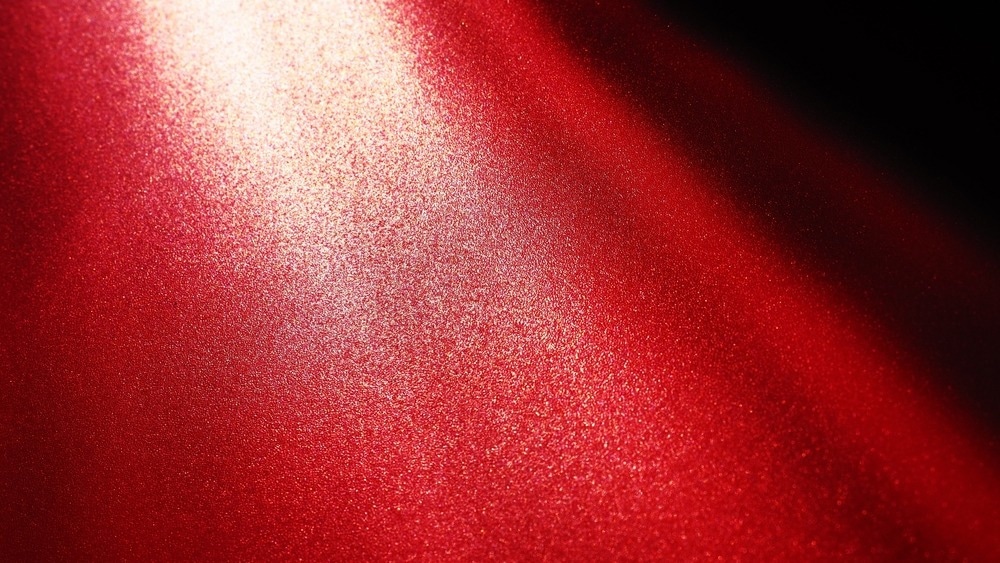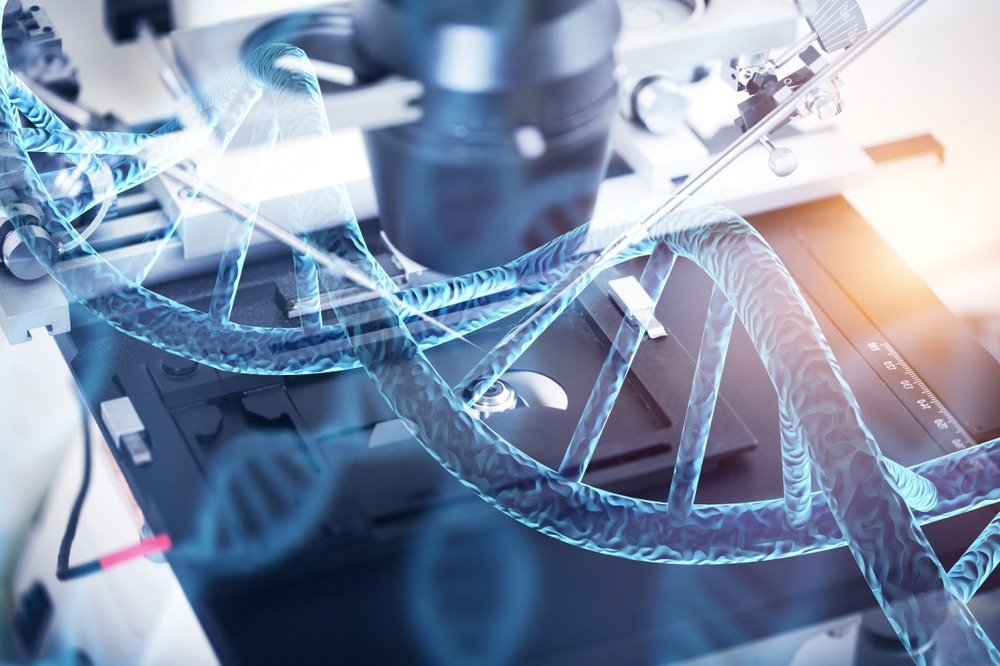Complex 3D micro- and nanostructures, such as photonic crystals and microfluidic arrays, have widespread applications in micro-optics, electronics, communications, biomedicine, and micro-electromechanical systems.

Image Credit: Karjalainen/Shutterstock.com
These applications put forward stringent fabrication requirements, including dimensional accuracy, shape accuracy, and surface roughness. Two-photon lithography is a versatile technique capable of answering these requirements and producing high-precision 3D structures of various materials with sub-diffraction-limit resolution.
Most lithographic techniques, including conventional photolithography, dip-pen nanolithography, capillary force lithography, nanoimprint lithography, transfer lithography, and others, are inherently 2D. As a result, lithography on a sub-micrometer scale has been applied mainly to planar surfaces.
Photolithography - A Workhorse in Nanofabrication
Conventional photolithography, based on one-photon absorption in a photosensitive medium, has been the dominant technology for industrial microfabrication for a long time. The development of advanced short-wavelength light sources (extreme ultraviolet) and novel photopolymers enabled a giant leap in the photolithographic fabrication of 2D electronic components with critical dimensions of the order of 10 nm or less.
Photopolymerization is a photochemical process where the energy of the photons is absorbed by the liquid photoresist, a light-sensitive material containing a photoinitiator, polymer precursors (monomers), and various organic solvents. The photon energy excites the photoinitiator, which then decomposes into free radicals. The radicals combine with monomers to produce monomer radicals that initiate the formation or crosslinking of polymer chains, thus converting the liquid photoresist into a solid.
Two-dimensional photolithographic patterns are generated by selectively exposing the photoresist-coated substrate to light (typically in the UV or extreme UV part of the spectrum) through a patterned mask, and by subsequently removing non-polymerized areas of the photoresist through dissolution in an appropriate solvent.
Key Advantages of Two-Photon Lithography
In the two-photon photopolymerization process, the polymerization process is initiated by absorbing two photons at a longer wavelength, usually in the near-infrared (NIR) spectral region. The two-photon process has two main advantages over single-photon absorption.
First, most commercially available photoresists have negligible linear absorption in the NIR region. Hence, a focused NIR (800 – 1064 nm) laser beam can penetrate deeply into the photoresist and initiate photopolymerization only at the focal point.
Second, when employing femtosecond lasers providing ultrashort pulses with a duration shorter than 100 fs, several non-linear optical effects arise, resulting in non-linear dependence of polymerization rate on the laser light intensity. As a result, the photoresist is exposed only within the focal volume of the beam (known as voxel). Outside the focal point voxel, the intensity of the laser beam is below the exposure threshold of the photochemical reaction. Thus the two-photon polymerization process is restricted only to this tiny volume enabling outstanding 3D resolution and accuracy.
Nanoscale 3D Additive Manufacturing
Compared to other laser-based direct writing techniques, such as stereolithography and selective laser sintering, the superior spatial resolution of the two-photon polymerization process makes the technique particularly suited for the high-precision additive manufacturing applications and fabrication of freestanding 3D micro/nanostructures with sub-diffraction-limit features.
A wide range of commercially available photoresists, developed by companies like Nanoscribe GmbH, Microresist Technologies, and MicroChem for conventional photolithography, are optically transparent in the NIR region and suitable for use in two-photon lithography applications. In the positive-tone photoresists, the material is initially polymerized entirely, followed by pattern writing by selective NIR exposure (causing photodegradation of the material ) and subsequent pattern development by solvent wash.
In negative-tone photoresists, NIR laser illumination polymerizes and crosslinks the polymer chains, directly creating the desired 3D pattern, which is then developed by a solvent wash of the non-polymerized photoresist.
Such materials exhibit high mechanical stability, low post-fabrication stress, and excellent chemical resistance, making them ideal for rapid prototyping and fabrication of high-resolution micro- and nanostructures for engineering applications (photonic crystals, nanofluidic devices, and others).

Image Credit: Billion Photos/Shutterstock.com
Biomedical Applications of Two-Photon Lithography
Researchers from academia and industry are actively developing biocompatible and biodegradable photoresists that can rapidly fabricate biomedical devices, such as cell scaffolds for regenerative medicine and microneedle arrays for targeted drug delivery.
Combining hydrogels, proteins, and biopolymers with synthetic materials (photoinitiators and polymers) paves the way towards low-cost fabrication of stimulus-responsive micro- and nanostructures exhibiting dynamic properties, including self-actuation and shapeshifting, under external stimuli, such as pH change, light exposure, and temperature variation.
Future Perspectives for Two-Photon Lithography
The rapid advancements in laser optics, materials science, and electronics enable the development of commercial two-photon lithographic set-ups comparable in cost, efficiency, and throughput to conventional photolithographic production lines, thus boosting the adoption of the two-photon lithography in industry. Such promising advances open new perspectives to the technique as a versatile high-resolution 3D nanofabrication strategy for advanced industrial applications.
References and Further Reading
Jing, X., et al. (2022). Two-photon polymerization for 3D biomedical scaffolds: Overview and updates. Frontiers in Bioengineering and Biotechnology, 10. Available at: https://doi.org/10.3389/fbioe.2022.994355
Faraji Rad, Z., et al. (2021) High-resolution two-photon polymerization: the most versatile technique for the fabrication of microneedle arrays. Microsyst. Nanoeng. 7, 71. Available at: https://doi.org/10.1038/s41378-021-00298-3
Harinarayana, V. and Shin, Y. C. (2021) Two-photon lithography for three-dimensional fabrication in micro/nanoscale regime: A comprehensive review. Optics & Laser Technology, 142,10 7180. Available at: https://doi.org/10.1016/j.optlastec.2021.107180
Huang, Z., et al. (2020) Two-photon polymerization nanolithography technology for fabrication of stimulus-responsive micro/nano-structures for biomedical applications. Nanotechnology Reviews, 9 (1), 1118-1136. Available at: https://doi.org/10.1515/ntrev-2020-0073
Disclaimer: The views expressed here are those of the author expressed in their private capacity and do not necessarily represent the views of AZoM.com Limited T/A AZoNetwork the owner and operator of this website. This disclaimer forms part of the Terms and conditions of use of this website.